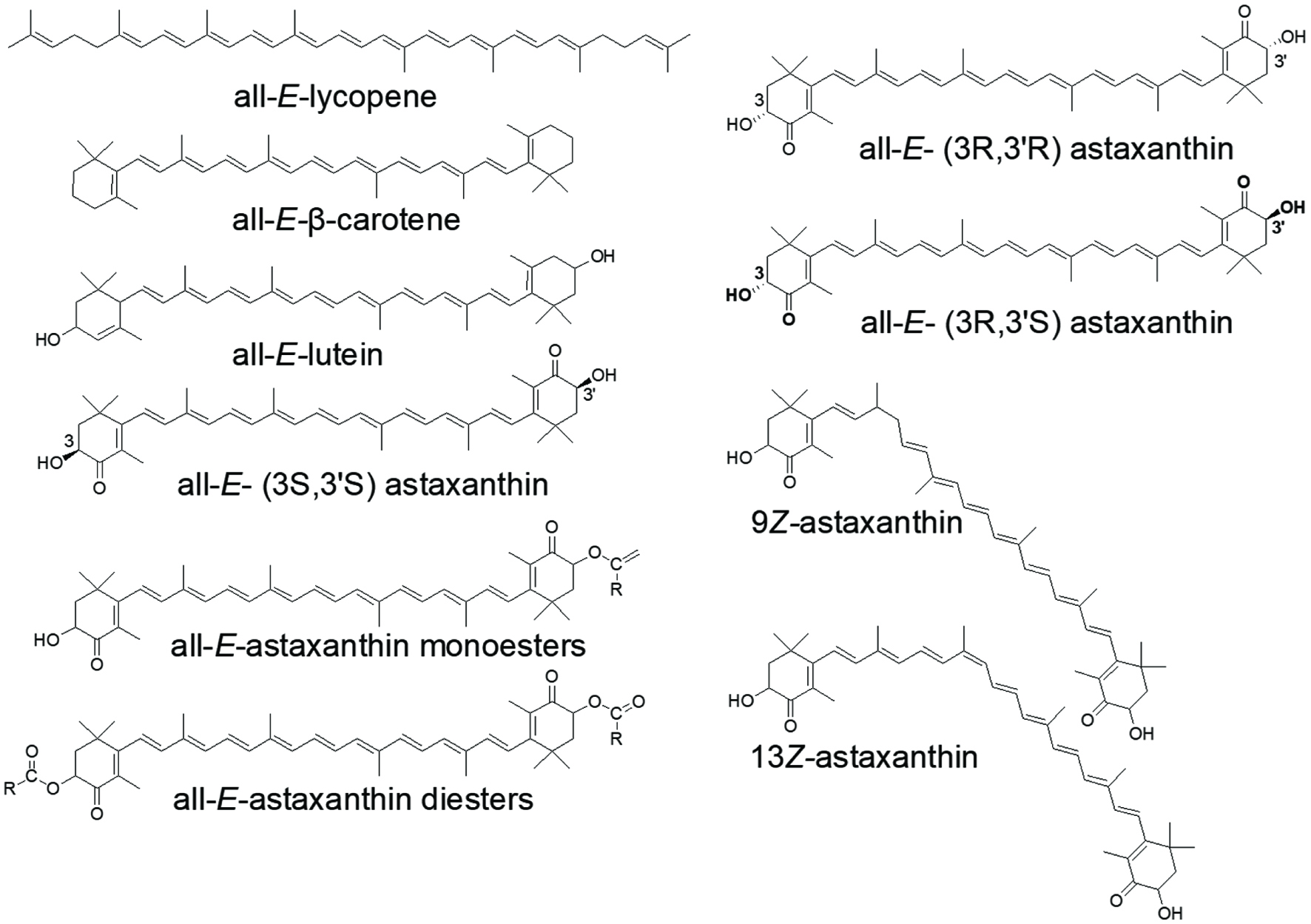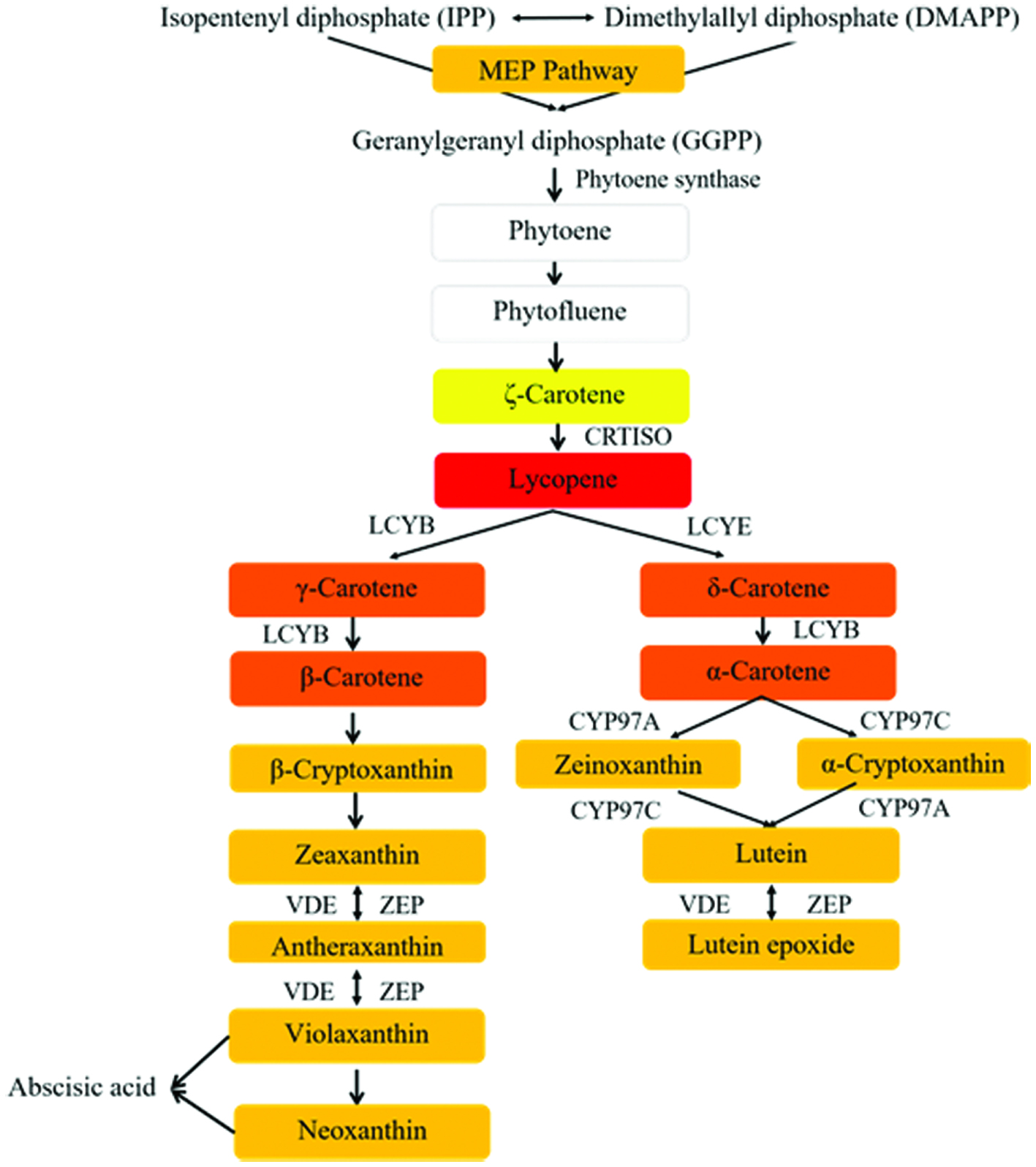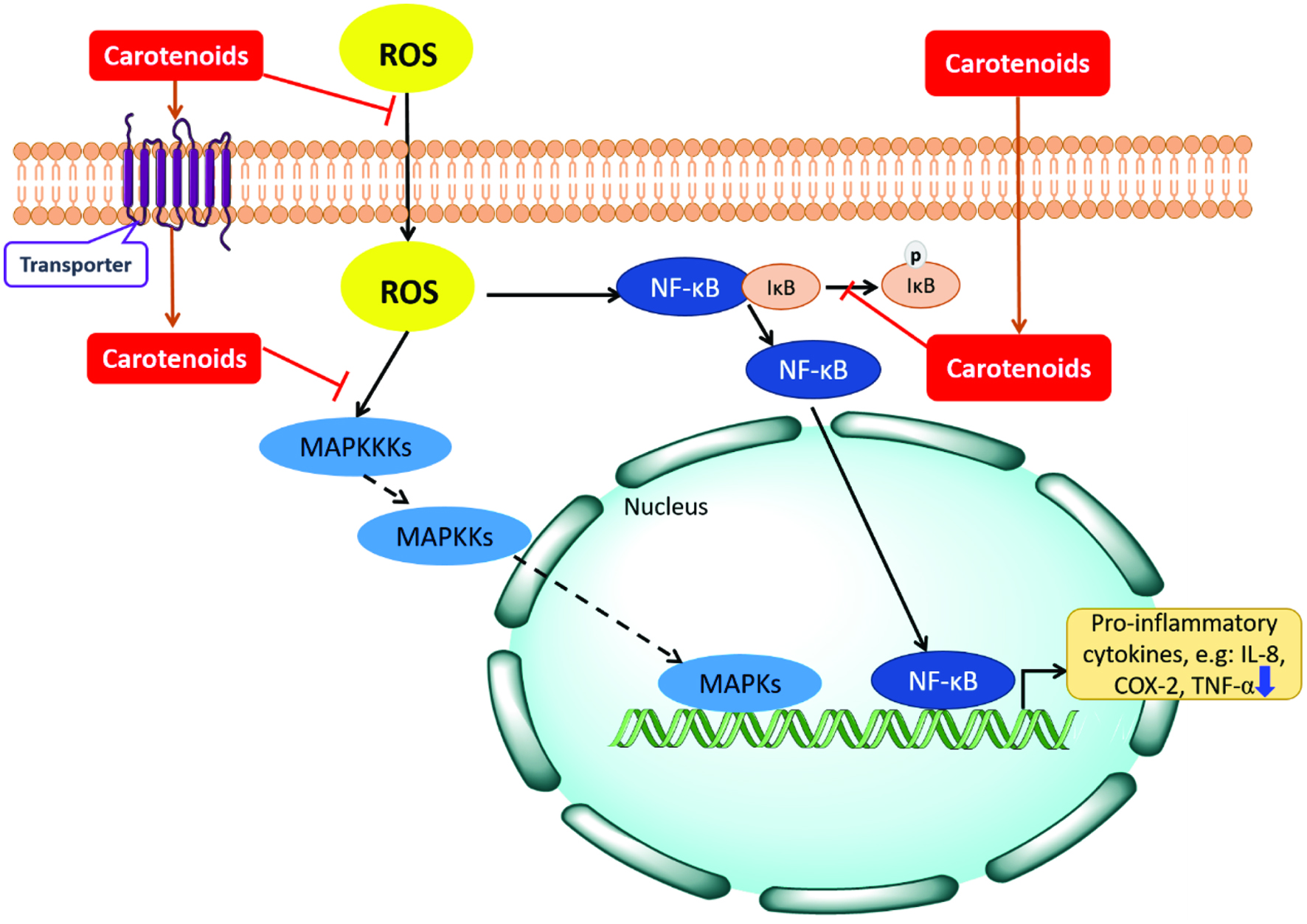
Figure 1. Common dietary carotenoids and different isomeric structures in free and ester forms of carotenoids as represented by astaxanthin. R represents saturated or unsaturated alkyl chains.
| Journal of Food Bioactives, ISSN 2637-8752 print, 2637-8779 online |
| Journal website www.isnff-jfb.com |
Review
Volume 10, June 2020, pages 32-46
Chemistry and biochemistry of dietary carotenoids: bioaccessibility, bioavailability and bioactivities
Figures



Tables
| Carotenoid | Food sources (concentration) | Reference |
|---|---|---|
| FW, fresh weight; DW, dry weight. | ||
| all-E-lutein | Squash, Sweet Momma flesh (18.6μg/g FW); Spinach (37.4μg/g FW); Kale (123.1μg/g FW); Potato, Yukon Gold flesh (4.1μg/g FW); Tomato (6.41 μg/g DW) | Tsao and Yang (2006); Li et al. (2012) |
| 13Z- or 13′Z-lutein | Tomato (0.76 μg/g DW) | Li et al. (2012) |
| 9Z- or 9′Z-lutein | Tomato (0.53 μg/g DW) | Li et al. (2012) |
| all-E-β-carotene | Cassava root, sweet yellow (7.27 μg/g FW); Squash, Sweet Momma flesh (3.7 μg/g FW); Kale (23.8 μg/g FW); Tomato (81.29 μg/g DW) | Carvalho et al. (2012); Tsao and Yang (2006); Li et al. (2012) |
| 9Z-β-carotene | Cassava root, sweet yellow (0.35μg/gFW); Tomato (2.15 μg/g DW) | Carvalho et al. (2012); Li et al. (2012) |
| 13Z-β-carotene | Cassava root, sweet yellow (0.5μg/gFW); Tomato (1.85 μg/g DW) | Carvalho et al. (2012); Li et al. (2012) |
| 15Z- or 15′Z-β-carotene | Tomato (1.15 μg/g DW) | Li et al. (2012) |
| all-E-lycopene | Tomato (145.85 μg/g DW) | Li et al. (2012) |
| 5Z- or 5′Z-lycopene | Tomato (4.24 μg/g DW) | Li et al. (2012) |
| 15Z- or 15′Z-lycopene | Tomato (2.79 μg/g DW) | Li et al. (2012) |
| 13Z- or 13′Z-lycopene | Tomato (2.25 μg/g DW) | Li et al. (2012) |
| 9Z- or 9′Z-lycopene | Tomato (1.75 μg/g DW) | Li et al. (2012) |
| all-E-astaxanthin | Antarctic krill, boiling (90.71μg/gDW) | Cong et al. (2019) |
| 13Z-astaxanthin | Antarctic krill, boiling (15.65μg/gDW) | Cong et al. (2019) |
| 9Z-astaxanthin | Antarctic krill, boiling (15.39μg/gDW) | Cong et al. (2019) |
| Summary of results | References | |
|---|---|---|
| Antioxidant activities | ||
| ABTS+ assay | lycopene > β-carotene > lutein > α-tocopherol | Zanfini et al. (2010) |
| aTEAC assay | lycopene > β-carotene = α-carotene > neurosporene > phytofluene = phytoene | Müller et al. (2011) |
| ABTS+ assay | violaxanthin > lutein > β-carotene | Fu et al. (2011) |
| DPPH assay | β-carotene > lutein > violaxanthin | Fu et al. (2011) |
| ROO• scavenging capacity | astaxanthin> lutein > zeaxanthin > α-tocopherol > fucoxanthin > β-carotene > lycopene | Rodrigues et al. (2012) |
| HO• scavenging capacity | α-tocopherol > astaxanthin > zeaxanthin > fucoxanthin > lutein > β-carotene > lycopene | Rodrigues et al. (2012) |
| ORAC-L, PLC and CAA assays | 13Z-astaxanthin > all-E-astaxanthin ≈ 9Z-astaxanthin | Yang et al. (2017) |
| DPPH assay | 9Z-astaxanthin > 13Z-astaxanthin > all-E-astaxanthin | Liu and Osawa (2007) |
| Against oxidative stress in H2O2 induced Caco-2 cells | 9Z-astaxanthin ≈ 13Z-astaxanthin > all-E-astaxanthin | Yang et al. (2017) |
| Extending the median lifespan of Caenorhabditis elegans | 9Z-astaxanthin > all-E-astaxanthin > 13Z-astaxanthin | Liu et al. (2018) |
| DPPH and ORAC-L assays | 9Z-astaxanthin ≈ 13Z-astaxanthin > all-E-astaxanthin ≈ 13′Z-lutein > 9Z-lutein ≈ all-E-lutein | Yang et al. (2018); Yang et al. (2017) |
| AAPH assay | 5Z-lycopene > all-E-lycopene ≈other Z-lycopenes | Muller et al. (2011) |
| TEAC assay | all-E-zeaxanthin ≈ 13Z-zeaxanthin > 9Z-zeaxanthin | Böhm, et al. (2002) |
| Inhibiting LDL oxidation | all-E-β-carotene > 9Z-β-carotene | Lavy, et al. (1993) |
| Rat oral-dosing test | 9Z-β-carotene > all-E-β-carotene | Levin, et al. (1997) |
| Chemical-based assays and CAA assay | 3S,3′S-astaxanthin > 3R,3′R-astaxanthin > a mixture of different stereoisomers of astaxanthin (S: meso: R = 1:2:1) | Liu, Luo, et al. (2016) |
| Anti-inflammatory activity | ||
| Caco-2 monolayers treated with TNF-α | 9Z-astaxanthin ≧ 13Z-astaxanthin ≧ all-E-astaxanthin | Yang et al. (2019) |
| Through inhibiting the nuclear NF-κB p50 subunit translocation and down-regulating the JNK activation | carotenoid extract rich in 9Z- or 9′Z-β-carotene and all-E-β-carotene | Yang et al. (2013) |
| Against LPS-induced inflammation in macrophages | meso-zeaxanthin [(3R, 3′S)- β, β-carotene-3, 3′-diol] | Firdous, Kuttan, and Kuttan (2015) |
| Lower the production of inflammatory mediators in UV-irradiated or IL-1-treated fibroblasts | phytoene and phytofluene | Fuller et al. (2006) |
| Through regulating pathways including Akt and MAPK pathways | fucoxanthin | Cho et al. (2018) |
| Anti-cancer effects | ||
| Benign prostate hyperplasia (BPH) treatment in mice | Z-lycopenes ≧ all-E-lycopene | Zou et al. (2014) |
| Inhibiting the colon cancer cell growth | 3S,3′S-astaxanthin ≈ 3R,3′R-astaxanthin ≈ a mixture of different stereoisomers of astaxanthin (S: meso: R = 1:2:1) | Liu, Song, et al. (2016) |
| Controversial results | lycopene on prostate cancer | Woodside et al. (2015) |
| Controversial results | β-carotene on lung cancer | Woodside et al. (2015) |
| Macular degeneration | ||
| Protection against age-related macular degeneration (AMD) | lutein and zeaxanthin | Tsao, R. (2006) |
| Deposit in the retina of mammals | astaxanthin and lutein | Guerin et al. (2003) |
| Play an important role in retinal synthesis | β-carotene | Matos et al. (2017) |